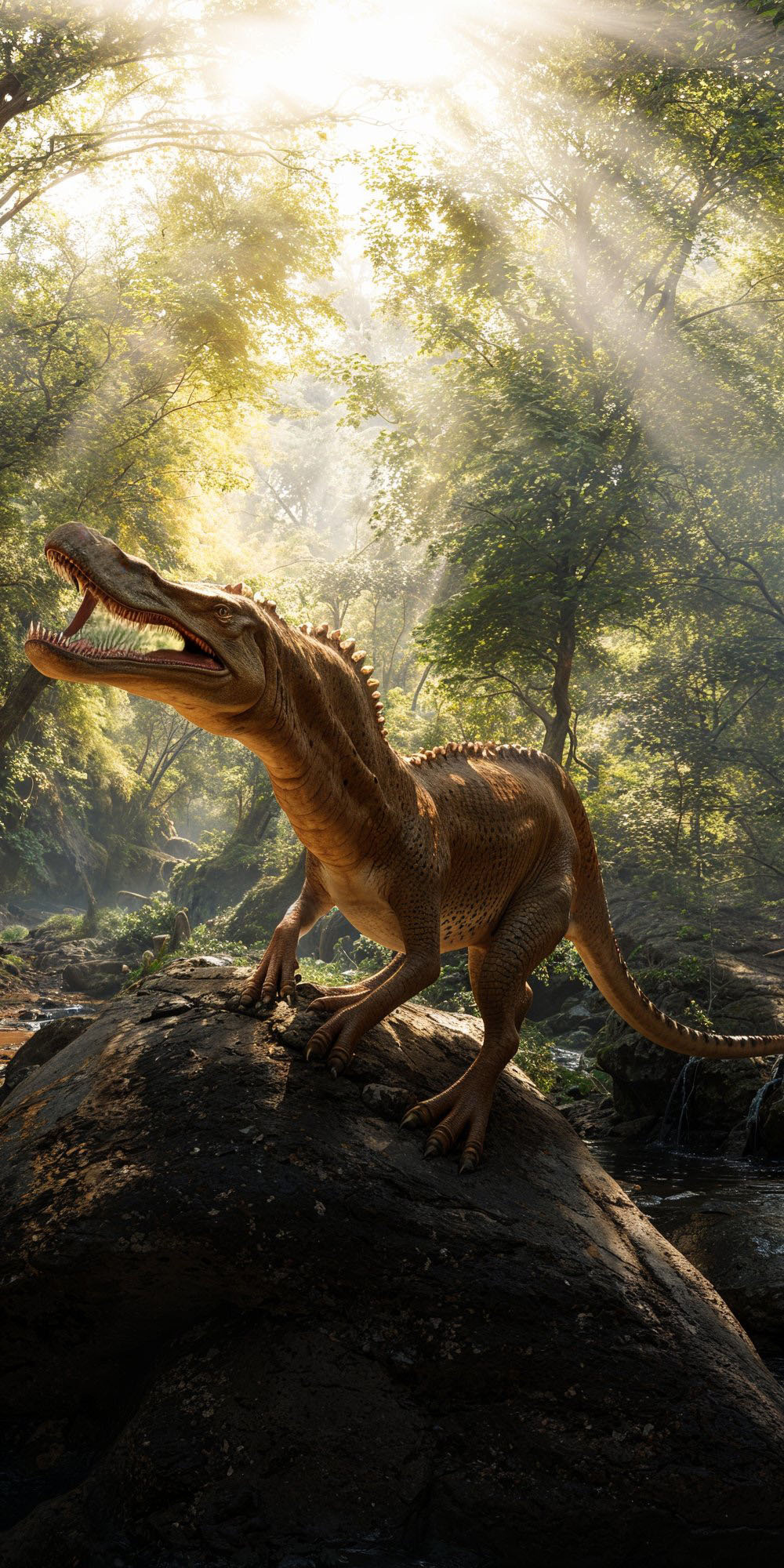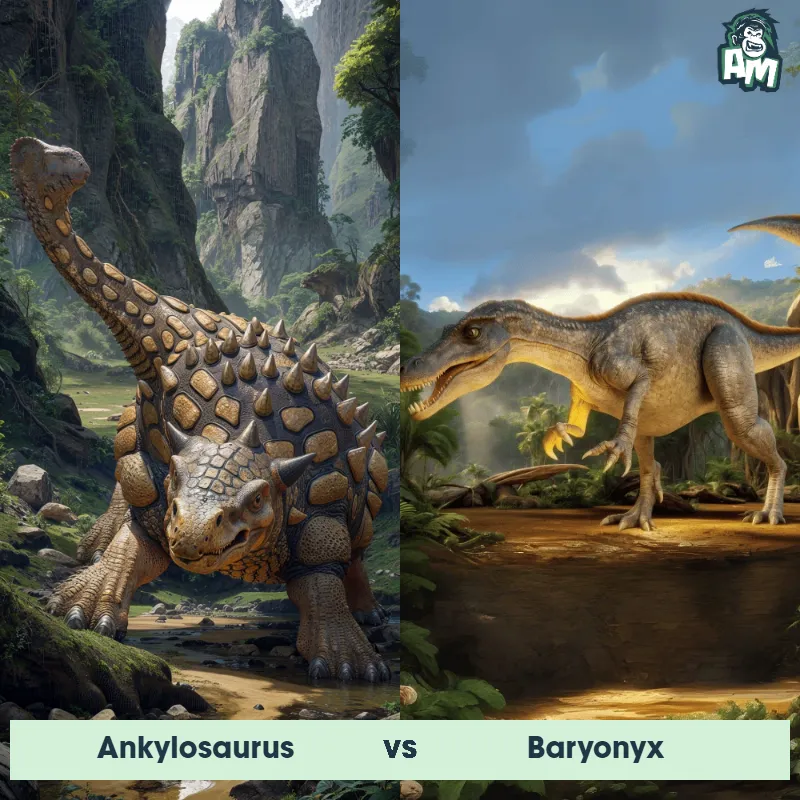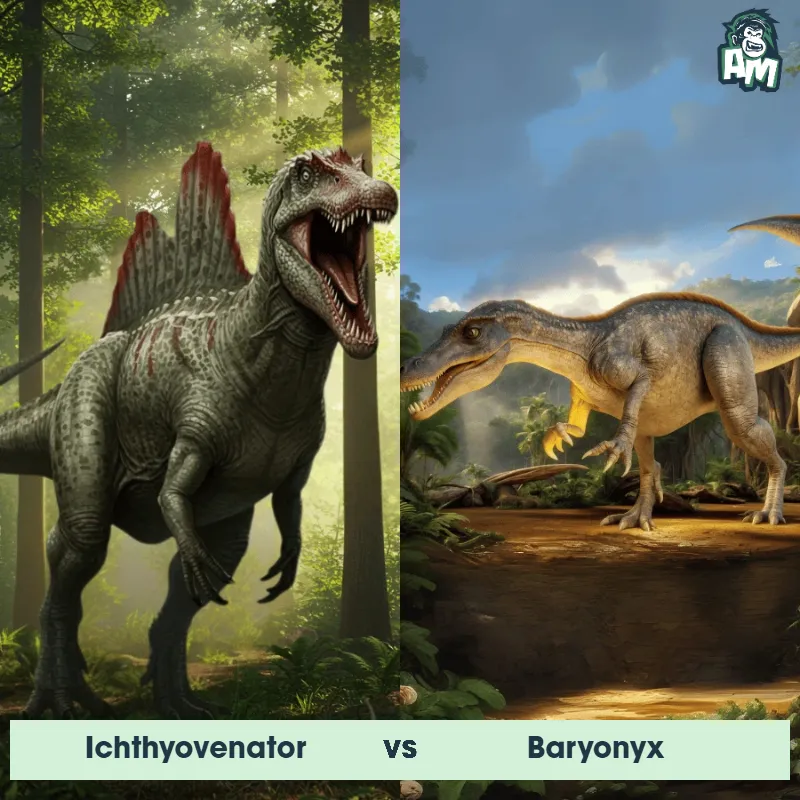The Baryonyx
Baryonyx, also known as the "heavy claw," was a carnivorous dinosaur that lived during the Early Cretaceous period. This large theropod had a crocodile-like skull with conical teeth suited for catching fish. It had a long, low body with a sail-like structure on its back, clawed hands, and a sharp, elongated snout.

| Baryonyx | |
|---|---|
| Size | Approximately 25 ft (7.6 meters) in length |
| Weight | Around 2,200 lbs (1,000 kg) |
| Speed | 25 mph (40 km/h) to 30 mph (48 km/h) |
| Key Strength | Powerful claw |
| Biggest Weakness | Vulnerable underbelly |
| Scientific Name | Baryonyx walkeri |
| Family | Spinosauridae |
| Habitat | Near water sources |
| Geography | Europe |
| Diet | Fish and small prey |
| Lifespan | 25 years - 30 years |

The Baryonyx
Baryonyx, also known as the "heavy claw," was a carnivorous dinosaur that lived during the Early Cretaceous period. This large theropod had a crocodile-like skull with conical teeth suited for catching fish. It had a long, low body with a sail-like structure on its back, clawed hands, and a sharp, elongated snout.
Fun Fact: One fun fact about Baryonyx is that it is believed to have had a diet primarily consisting of fish, as evidenced by the fish scales found in its stomach contents.
| Baryonyx | |
|---|---|
| Size | Approximately 25 ft (7.6 meters) in length |
| Weight | Around 2,200 lbs (1,000 kg) |
| Speed | 25 mph (40 km/h) to 30 mph (48 km/h) |
| Key Strength | Powerful claw |
| Biggest Weakness | Vulnerable underbelly |
| Scientific Name | Baryonyx walkeri |
| Family | Spinosauridae |
| Habitat | Near water sources |
| Geography | Europe |
| Diet | Fish and small prey |
| Lifespan | 25 years - 30 years |
Baryonyx Matchups
We use AI to simulate matchups between the Baryonyx and other animals. Our simulation considers size, strength, and natural predatory behaviors to determine the most likely outcome.

Can't find the Matchup you want?
Create Your Own MatchupBaryonyx: Diet, Predators, Aggression, and Defensive Behaviors
What did Baryonyx eat?
Baryonyx primarily fed on fish, but they were also known to consume small dinosaurs, reptiles, and other aquatic prey. Their elongated, slender jaws were adapted for catching fish, and they hunted along the shorelines and rivers during the Cretaceous period.
Did Baryonyx have any predators?
As apex predators themselves, adult Baryonyx did not have many natural predators. However, juveniles and subadults may have been at risk of being hunted by larger theropods such as Spinosaurus or other carnivorous dinosaurs that competed for the same food sources.
Was Baryonyx aggressive?
Baryonyx was likely a solitary predator and may have displayed aggression towards other carnivorous dinosaurs when competing for territory or resources. However, their behavior towards other Baryonyx individuals is uncertain.
Did Baryonyx fight?
Baryonyx may have engaged in territorial disputes or fights over food, mates, or dominance within their social hierarchy. Fights between individuals could have involved biting, slashing with claws, and displays of intimidation to establish dominance.
How did Baryonyx defend themselves?
Baryonyx likely relied on their size, strength, and sharp claws as their main defenses against potential threats. They may have used their long snouts and powerful jaws to deliver swift and lethal bites to deter predators or competitors.
What was Baryonyx's biggest weakness in a fight?
Despite their formidable size and strength, Baryonyx may have been vulnerable in confrontations with larger or more powerful predators such as Spinosaurus or other massive theropods. Their relatively lighter build and specialized diet of fish could have made them less equipped for prolonged battles with dominant competitors.
Fun Fact: Another interesting fact about Baryonyx is that it is one of the few known dinosaurs that had a special adaptation for catching fish: a long, narrow snout perfect for snagging slippery prey underwater.
Fun Fact: Baryonyx is notable for its large claws, particularly on its forelimbs, which may have been used for hunting and possibly even defense against other predators.












